Trekking in Nepal 2026/2027: Your Ultimate Guide to Himalayan Adventure

Planning trekking in Nepal 2026 or mapping out a dream trek for trekking in Nepal 2027? This long-form Nepal trekking guide compares the most iconic Himalayan trekking Nepal routes—Everest Base Camp, Annapurna Circuit, Langtang Valley, Upper Mustang, and the Manaslu Circuit—and explains permits, seasons, logistics, sustainability, gear, culture, and the evolving rules for high altitude trekking Nepal. If you’re searching for the best trekking in Nepal, this is your one-stop, ready-to-book resource.
Introduction: Nepal’s Treks—Classic Soul, Future-Ready
Nepal has been a pilgrimage for mountain lovers for decades, a country where trails double as living museums and where tea houses glow with the warmth of yak-butter lamps and fresh dal bhat. From the bustling bridge crossings of the Khumbu to the whisper-quiet courtyards of Manaslu villages, Himalayan trekking Nepal still delivers that spine-tingling mix of altitude, culture, and awe.
What’s different in 2026/2027 is how ready the country is for your next journey. Trail maintenance is steadier, bridges more resilient, and tea houses increasingly adopt solar power, filtered water refill points, and waste sorting. Permit systems are easier to navigate (many conservation permits can be obtained through NTNC’s e-permit portal), and the government’s guide-and-TIMS framework has clarified responsibilities for visitors and operators alike. The result? A safer, more responsible, and more rewarding era of Nepal adventure travel 2027—without losing the soul that made Nepal legendary in the first place.
Why Trekking in Nepal Is Unique (and Still the Benchmark)
1) Mountains that Redefine Scale
Nowhere else collects so many 8,000-meter giants into such trekker-friendly amphitheaters. Even from tea-house verandas, you’re staring at avalanched ridges, hanging glaciers, and wind-torn summits. Few destinations deliver such dramatic scenery without full-scale expedition logistics.
2) Culture You Walk Through, Not Past
Nepal isn’t a wilderness separated from people; it’s a living cultural landscape. Mani walls, monasteries, harvest terraces, incense, festivals—on every route you’ll meet communities whose languages, homes, and rituals have adapted to height and seasons. Treks unfold like a story, one village at a time.
3) World-Class Lodge Networks
Unlike many high mountain regions, Nepal’s tea-house ecosystem makes high altitude accessible. You can travel light, sleep indoors most nights, and enjoy hot meals—yet still feel far from modern noise. The hospitality tradition is the Nepal difference.
4) A Smarter, Safer Framework
As of 2023, Nepal moved to require licensed guides and agency-issued TIMS cards on most protected routes—plus existing restricted-area rules in regions like Manaslu. The aim: better safety, better jobs, and better conservation outcomes. For you, it means clearer expectations and stronger on-trail support.
Top Trekking Destinations for 2026/2027
Below are the crown jewels of trekking in Nepal 2026 and trekking in Nepal 2027—each with a distinct personality, seasonality, and permit mix.
Everest Base Camp Trek 2026: The Icon of the Khumbu
Why go: Because standing on Kala Patthar at sunrise—face-to-face with Everest’s black pyramid and Nuptse’s serrated wall—feels like stepping into mountaineering myth. The trek strings together Namche Bazaar, Tengboche Monastery, Dingboche, Lobuche, Gorakshep, and Everest Base Camp, with acclimatization walks delivering huge views long before you reach the glacier.
Permits & fees: You’ll secure Sagarmatha National Park Entry and the Khumbu Pasang Lhamu Rural Municipality permit (paid at local checkpoints). Many operators now note a Khumbu fee of around NPR 3,000 for foreigners (recent updates in late 2024/2025 raised it from 2,000 in several notices). Always confirm latest amounts before departure.
Guide & TIMS: A licensed guide and TIMS are required on most protected routes per the 2023 revision; Khumbu follows a local-permit model in addition to national park entry. Check specifics with your Nepal agency for your exact dates.
Best time:
- Spring (late Mar–May): Stable weather, climbers at Base Camp, long daylight.
- Autumn (Oct–Nov): Crystal views, cooler nights, peak demand.
- Winter: Quiet but severe cold; short days and icy sections.
- Monsoon: Wet, cloudy, flight delays—generally avoided.
What’s new by 2026/2027: Gradual tea-house upgrades, more refill stations, and clearer waste policies, plus evolving local rules that keep safety and sanitation top of mind in the Khumbu corridor.
Annapurna Circuit Trek 2027 & Annapurna Base Camp
Why go: Variety. The Annapurna Circuit Trek 2027 is a masterclass in changing biomes—subtropical valleys, pine forests, cold-desert rain shadows—culminating in the famous Thorong La (5,416 m) crossing and a descent to the pilgrimage site of Muktinath. The Annapurna Base Camp (ABC) trek funnels you into a natural arena of peaks, with sunrises that feel theatrical.
Permits: ACAP (Annapurna Conservation Area Permit); TIMS and guide requirements apply broadly under the national policy (verify details near your travel date). ACAP permits can be processed via NTNC’s e-permit portal and offices.
Best time:
- Autumn & Spring: Best views and trail conditions; rhododendron blooms in spring.
- Winter: Clear skies but deep cold at altitude (lower foothill treks still good).
- Monsoon: Mud and cloud, but rain-shadow routes (e.g., Upper Mustang add-on) can be viable.
Recent changes: Expanding roads have reached deep into side valleys; the upside is flexibility—many trekkers now skip road-dust segments by jeep and focus on pristine sections and side valleys. Tea houses continue to improve insulation and services in popular villages.
Langtang Valley Trek Nepal: Close to Kathmandu, Big on Heart
Why go: Langtang Valley Trek Nepal is the most accessible high-altitude journey from Kathmandu—yet it feels worlds away. Trails weave through forest and yak pastures to Kyanjin Gompa, with day hikes to Kyanjin Ri or Tserko Ri for sunrise spires and glacier views. It’s a trek with heart: post-earthquake rebuilding fostered a powerful community spirit, making your visit a contribution as well as an adventure.
Permits: Langtang National Park Entry + TIMS/guide under national rules for protected routes. (Confirm current details with your outfitter; the 2023 framework is widely referenced across operators.)
Best time: Autumn and spring are standouts; winter can be magical but cold; monsoon is rainy yet lush.
Who it suits: Trekkers short on time who still want high-altitude drama and strong cultural encounters—and photographers who crave alpenglow without a domestic flight.
Upper Mustang Trek Nepal: Walking the Wind Kingdom
Why go: A trek through Upper Mustang is like stepping into an illustrated manuscript—ochre cliffs, cave complexes, poplar-lined rivers, whitewashed walled towns, and the once-forbidden city of Lo Manthang. Culturally Tibetan and geologically otherworldly, Mustang sits in the rain shadow, offering monsoon-season trekking that’s dry and luminous.
Permits: Upper Mustang is a restricted area—you’ll need a special permit via a licensed trekking agency and must trek with a licensed guide. Fees are higher here than most regions; your operator will manage the process. (Restricted areas in Nepal require agency issuance and prohibit independent solo trekking.)
Best time: Spring and autumn are glorious; monsoon is viable thanks to the rain shadow; winters are severe at altitude.
Manaslu Circuit Trek 2026/2027: Wild and Regulated
Why go: The Manaslu Circuit Trek 2026/2027 loops around the 8,163 m “Mountain of the Spirit,” ascending from the Budhi Gandaki gorge to the sweeping Larkya La (≈5,106 m) crossing. It’s quieter than the mainstream circuits and deeply infused with Tibetan-Buddhist culture—prayer wheels, mani walls, and chortens guide your days.
Permits:
- Restricted Area Permit (RAP) for Manaslu (agency-issued only; minimum two trekkers, licensed guide required).
- MCAP (Manaslu Conservation Area Permit) and ACAP (because you exit into the Annapurna side). Several operators note the convenience of NTNC’s e-permit for conservation areas.
Trail & lodge conditions: Bridges and wayfinding have steadily improved; tea houses remain simpler than Khumbu or busy Annapurna hubs but are upgrading essentials—insulation, solar, cleaner kitchens, and water refill points.
Best time: Autumn (late Sep–Nov) and spring (Mar–May). Early-season snow/ice can linger near Larkya La; winter demands serious cold management; monsoon is lush but slippery.
Who it suits: Trekkers who love a wilder feel, value cultural immersion, and don’t mind fewer amenities in exchange for authenticity.
Sustainable Trekking Trends in 2026/2027
Sustainability has gone from “nice to have” to baseline. Here’s how 2026/2027 is changing the way we walk:
- Guide-and-TIMS enforcement on protected routes: Better safety, better coordination, more local employment. Expect your trek to include a licensed guide as standard.
- E-permits & digitization: NTNC’s portal streamlines ACAP/MCAP and helps planning timelines. (Epermit)
- Refill, not discard: More tea houses run water filters; bring a purifier and skip single-use plastic.Solar & sanitation: Lodges increasingly adopt solar lighting and improved waste/grey-water systems.
- Smarter routing: In Annapurna, many itineraries now avoid road-dust segments through jeep assists, focusing travelers spend in villages that invest in sustainability.
Your role: carry a filter bottle, pack out trash, respect trail closures, and spend locally (guides, porters, homestays, artisans).
Guided vs. Independent Trekking: Rules & Permits Explained
The short version:
- On most protected routes in Nepal, a licensed guide and an agency-issued TIMS card are required per the Revised TIMS Provision effective March 31, 2023. (Nepal Tourism Board)
- In restricted areas (e.g., Manaslu, Upper Mustang, Tsum Valley, etc.), permits must be issued by a licensed trekking agency, and independent solo trekking is prohibited; commonly, a minimum of two trekkers plus a licensed guide is required. (Immigration Nepal)
Why it’s good news: You get better safety oversight, more accurate on-the-ground updates, cultural interpretation, and reliable help if weather or health issues force changes.
Where to get conservation permits: NTNC’s offices and e-permit portal handle ACAP/MCAP online or in Kathmandu/Pokhara. Restricted permits are processed via your agency. (Epermit)
Trekking Logistics (2026/2027): Flights, Teahouses, Food, Internet, Altitude
Getting to Trailheads
- Everest (Khumbu): Most treks start with a flight to Lukla (weather-prone) or a road approach via Salleri/Phaplu to reduce flight risk.
- Annapurna: Road access is extensive; you can tailor your start/finish via jeep to optimize trail time.
- Langtang: Road transfer from Kathmandu to Syabrubesi.
- Manaslu: Road to Soti Khola/Machha Khola; seasonal conditions can shift the exact drop-off a village earlier/later.
Tea Houses & Food
Expect twin rooms or private rooms (simple), shared dining spaces, and varied menus: dal bhat, thukpa, momos, fried rice/noodles, eggs/porridge/chapati, and growing vegetarian/vegan choices. Prices rise with altitude; comfort generally increases each year in popular villages.
Internet & Power
Wi-Fi is common in Khumbu and Annapurna hubs; spottier elsewhere. Carry power banks (and sometimes pay a small fee to charge). Don’t underestimate how precious a fully charged headlamp can be on pre-dawn pass days.
Altitude: Go Slow to Go Far
Above ~3,000 m, follow “climb high, sleep low,” add buffer days, hydrate, and listen to your body. Work with your guide to plan acclimatization hikes. Insurance must include high altitude and helicopter evacuation (share policy details with your guide).
Best Time to Trek in Nepal (By Season)
- Autumn (late Sep–Nov): The classic window—dry trails, clear skies, vibrant festivals.
- Spring (Mar–May): Rhododendrons blaze red and pink; longer daylight; some snow lingers high.
- Winter (Dec–Feb): Minimal crowds, intense cold; high passes may close; lower foothill treks are superb.
- Monsoon (Jun–Aug): Lush, moody, and buggy; leeches and landslides are possible; Upper Mustang shines in the rain shadow.
Quick picks by goal:
- Big passes & iconic views: Autumn → Everest Base Camp Trek 2026, Manaslu Circuit Trek 2026/2027, Annapurna Circuit Trek 2027.
- Flowers & photography: Spring → ABC, Langtang, Khumbu side hikes.
- Cultural immersion & solitude: Shoulder seasons and winter (with caution).
- Monsoon travelers: Upper Mustang Trek Nepal.
Essential Preparation & Gear Checklist
Training (8–12 weeks)
- Cardio base: 3–4 sessions/week (hiking, running, cycling).
- Strength & stability: Hips, glutes, core, and ankles; downhill conditioning reduces knee pain.
- Loaded hikes: Step-ups or hill repeats with a 6–10 kg pack.
Personal Gear
- Footwear: Broken-in trekking boots + lodge shoes.
- Layers: Wicking base, mid-layer (fleece/light synthetic), puffy jacket, waterproof shell & pants, trekking pants/thermals.
- Head & hands: Sun hat, warm hat, liner + insulated gloves.
- Sleep: Sleeping bag −10°C to −15°C comfort (season-dependent) + liner.
- Trekking kit: Poles, headlamp, microspikes (shoulder seasons), gaiters (mud/snow).
- Hydration & waste: Filter bottle or purifier, two 1L bottles, reusable lunchbox & cutlery.
- Power & nav: Power bank, spare batteries; offline maps + paper backup.
- Medical: Blister kit, electrolytes, anti-nausea, any personal meds; discuss acetazolamide use with your physician.
- Documents & cash: Passport copies, permit copies, Nepal trekking permits 2026 as applicable, insurance with helicopter evac, and enough cash for remote areas.
Packing philosophy: Light but complete. Your guide and porter team will thank you (and your knees will too).
Cultural Encounters: Sherpa, Tamang, Gurung, Thakali
Sherpa (Khumbu): Monasteries, prayer flags, memorial chortens, and mountain lore define the Everest Base Camp Trek 2026. Spend time in Namche Bazaar’s museums, and don’t miss evening chants at Tengboche.
Tamang (Langtang): Woodsmoke kitchens, terraced fields, and a rhythm tied to herding and forest cycles. Post-rebuild Langtang offers some of the most heartfelt hospitality in Nepal.
Gurung (Annapurna): Stone villages and community-led models that helped pioneer tea-house trekking. Ghandruk and Chhomrong anchor classic ABC itineraries.
Thakali (Kali Gandaki/Annapurna): Famous for kitchens and hospitality. You’ll taste buckwheat bread, apple products, and Thakali thalis on the Annapurna Circuit Trek 2027 descent.
Manaslu (Tibetan-influenced communities): Mani walls, carved door lintels, and gompas; move clockwise around shrines, dress modestly, and ask before photographing ceremonies.
Cultural etiquette essentials:
- Greet with “Namaste” (hands at heart).
- Walk clockwise around stupas and mani walls.
- Ask before photos, especially in monasteries.
- Keep phones silent during rituals.
- Buy local crafts directly from artisans—a meaningful way to support communities.
Future Outlook: Why 2026/2027 Are Stellar Years to Trek Nepal
- Safety & clarity: The guide-and-TIMS framework on protected routes is well established now, meaning smoother permit checks and better rescue coordination. (Nepal Tourism Board)
- Conservation upgrades: Expect more filtered water refill points, solar lighting, and waste segregation across lodges—especially on flagship routes.
- Digital convenience: Wider adoption of e-permits for conservation areas simplifies pre-trip admin. (Epermit)
- Smarter routing & road reality: In Annapurna, itineraries increasingly leapfrog road-dust sections by jeep and invest time in side valleys and sanctuary zones—higher-quality trail time for you.
- Community benefits: The policy shift creates more stable jobs for guides and porters, and more traveler spending stays local—sustainability that feels good and works.
Bottom line: in 2026/2027 the infrastructure is better, rules are clearer, and sustainability is standard practice—not an afterthought.
FAQs
Q1: What are the main permits I need for popular treks?
- Everest Base Camp: Sagarmatha National Park Entry + Khumbu Pasang Lhamu Rural Municipality permit; guide/TIMS rules apply under national policy for protected routes—confirm details for your dates.
- Annapurna Circuit/ABC: ACAP (via NTNC e-permit/office), with guide/TIMS per national rules. (ntnc.org.np)
- Langtang: Langtang National Park Entry (+ TIMS/guide per national policy). (Nepal Tourism Board)
- Manaslu: RAP (agency-issued, min. two trekkers, licensed guide) + MCAP + ACAP. (Immigration Nepal)
- Upper Mustang: Restricted-area permit (via agency) + licensed guide. (Immigration Nepal)
Q2: Is solo trekking banned?
A licensed guide and agency-issued TIMS are mandatory on most protected routes under the 2023 revision. Restricted areas like Manaslu/Upper Mustang have long prohibited independent solo trekking and require agency-issued permits. Always check the current rule set for your exact itinerary and date. (Nepal Tourism Board)
Q3: What’s the best time to trek in Nepal?
Autumn (late Sep–Nov) and Spring (Mar–May) are prime. Winter offers solitude but harsh cold; monsoon is lush, with Upper Mustang as a dry-season exception thanks to its rain shadow.
Q4: How hard are the big passes?
- Thorong La (5,416 m) on Annapurna is a long, sustained climb with potential wind chill.
- Larkya La (~5,106 m) on Manaslu can be icy and requires an early start.
- Kala Patthar (~5,545 m) isn’t a pass but an EBC viewpoint; the altitude and cold make it serious. (Plan buffer days and acclimatization walks.)
Q5: What’s changing about fees in Everest?
Khumbu municipality fees have recently increased to about NPR 3,000 for foreigners per several operator updates (replacing older 2,000 NPR quotes). Always confirm the current schedule before you go.
Q6: Do I need travel insurance?
Yes—choose high-altitude coverage with helicopter evacuation and share policy details with your guide/agency.
Q7: Can I get vegetarian/vegan food?
Yes. Dal bhat is naturally vegetarian and most kitchens can adapt; options broaden in Khumbu/Annapurna hubs.
Q8: How do I trek sustainably?
Carry a filter bottle; avoid single-use plastics; stay on marked trails; book lodges with solar/waste systems; hire local, licensed guides and porters; buy crafts directly from artisans.
Lace Up—The Himalaya Are Ready
If you’ve been dreaming of trekking in Nepal 2026 or penciling in a sabbatical for trekking in Nepal 2027, this is your moment. The country has quietly tuned up the engine behind the magic—better bridges and permits, stronger safety frameworks, and tea houses leaning into solar and refill culture—without sanding off the edges that make Nepal thrilling.
Choose your story:
- The iconic arc to Everest Base Camp with monastery bells and the world’s highest skyline.
- The Annapurna Circuit Trek 2027 over Thorong La into a desert of wind and light, or a shorter, luminous Annapurna Base Camp sanctuary journey.
- The intimate power of the Manaslu Circuit Trek 2026/2027, where prayer flags point the way to Larkya La.
- The immediate, heartfelt welcome of Langtang Valley just beyond Kathmandu’s bustle.
- The dreamlike ochre canyons of Upper Mustang Trek Nepal, where monsoon means sun and sky.
Prepare well. Walk slowly. Greet everyone with “Namaste.” And leave the mountains a little better than you found them, so the next trekker—maybe you in 2030—meets the same magic. The Himalaya are ready. Are you?
Quick-Reference Links (for permits & rules)
- Revised TIMS & guide requirement (effective March 31, 2023): Nepal Tourism Board guidance on protected routes and TIMS cards. (Nepal Tourism Board)
- Restricted areas & group/guide rules: Nepal Department of Immigration (Trekking Permit page). (Immigration Nepal)
- ACAP/MCAP e-permits: NTNC e-permit portal + project pages for ACAP/MCAP. (Epermit)
- Khumbu local permit (Everest region) & fee updates: recent operator guidance (always confirm current amounts).
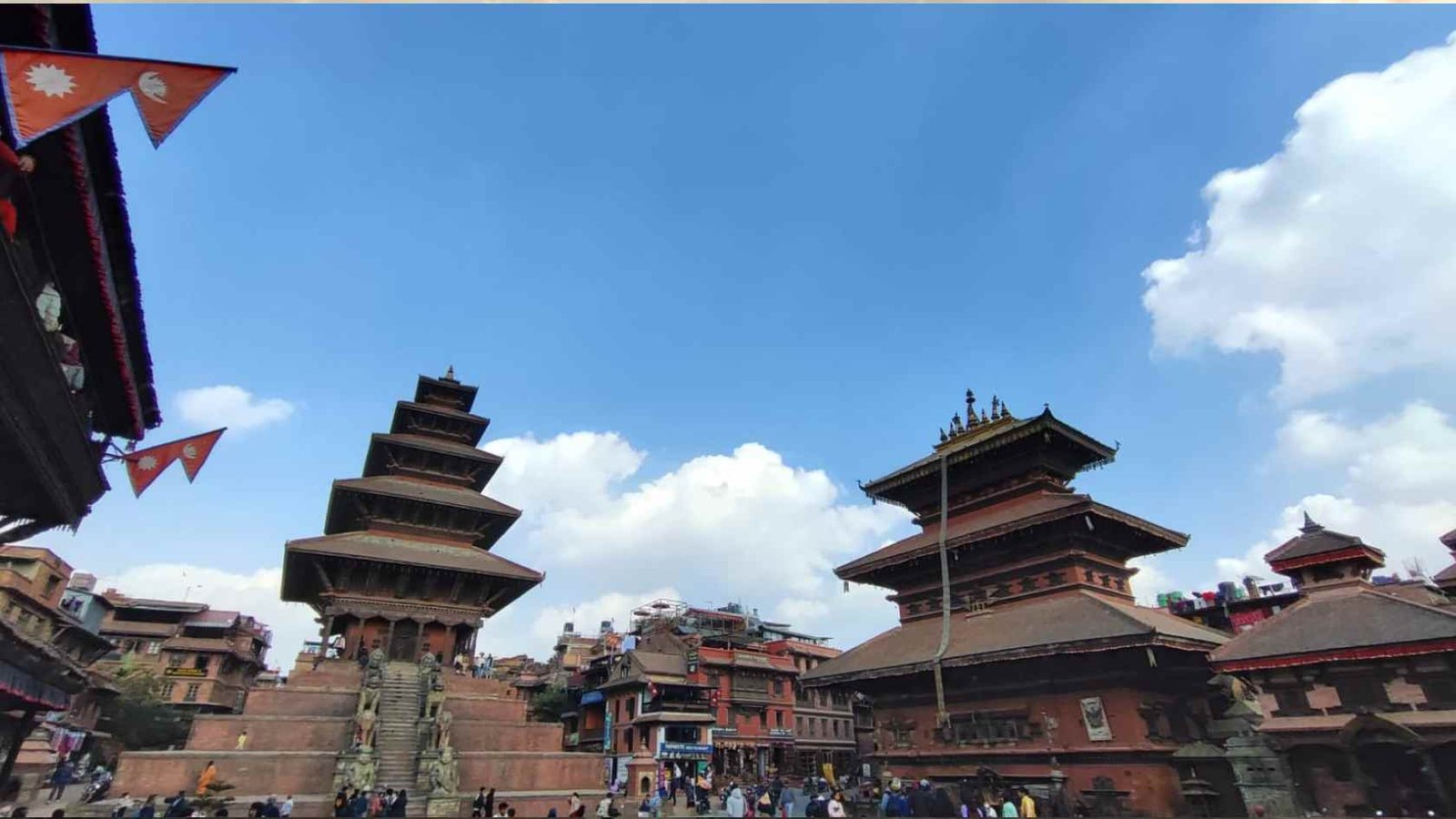


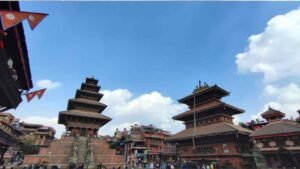
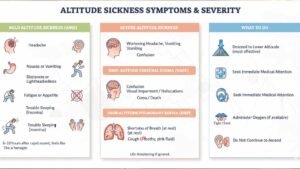
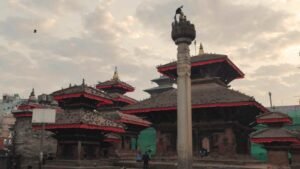
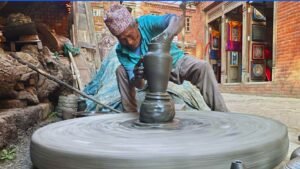
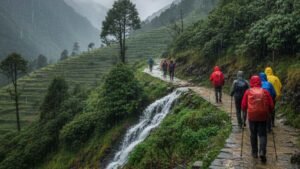
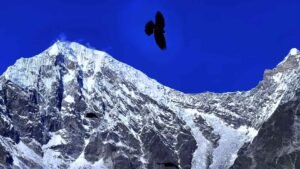
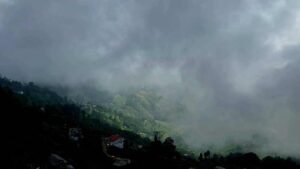

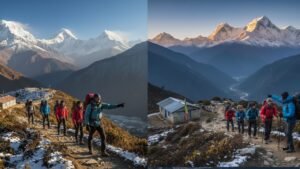
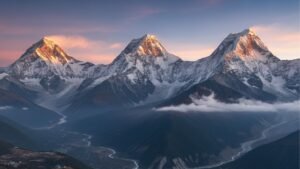
Post Comment